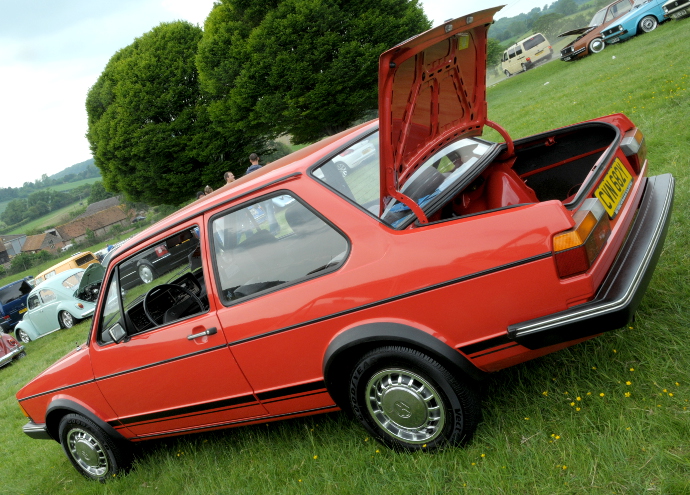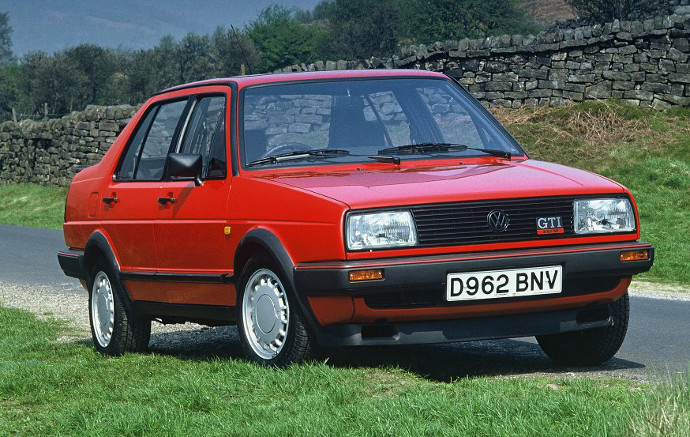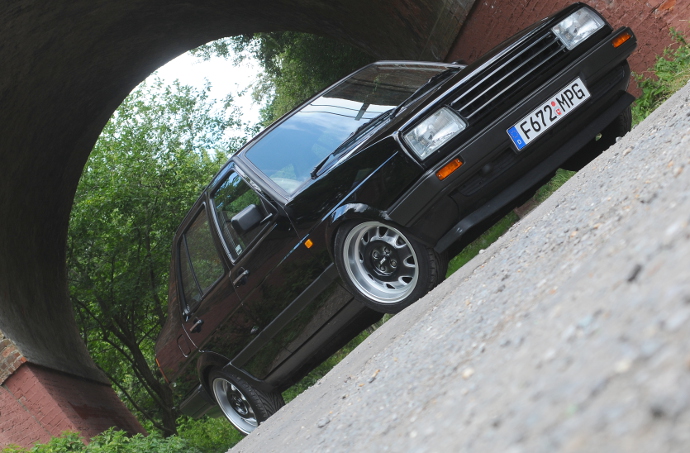While the enthusiast market for the Mk1 and Mk2 Golf has always been strong, the booted version has remained something of an acquired taste. Which is a shame because in our humble opinion the VW Jetta is a much underrated future classic and a car that offers huge scope for the water-cooled newer Dub fanatic. So here’s a bit about its history, and what to look for when buying…
The first Jetta appeared in 1979, but we had to wait until 1981 before it arrived here and despite the fact that mainland Europe was offered the option of a two-door, we only got the more practical but slightly less glamorous four-door instead. While VW recognised the popularity of the hatch, it also wanted a traditional booted car in its range – not least because of the perceived added security of having a separate boot where luggage could be kept out of view, something the firm thought would particularly appeal to business users.

That said, it was always more than just a Golf with a boot. The Jetta was given a smoother front end, rectangular headlights and while it sat on the same 240cm wheelbase, it was 380cm longer overall, the additional length due to its cavernous 630-litre boot. Despite weighing 55kg more, better aerodynamics gave it broadly similar performance.
Model range
There were three engines initially; the 1272cc, 1457cc and the fuel injected 1588cc in some markets – all borrowed from the Golf range. When it went on sale here, trim levels included the L and GL, both with a choice the 1.3 and 1.5 (an S being added when the latter was fitted) and the 1.6 LD diesel. In 1981, in line with the Golf, the Formel E Jetta appeared with the 3+E gearbox for better cruising and the addition of a rear spoiler. In 1982, the L was replaced by the C, which came with the 1.3 with the CL and GL getting the 1.5.

In some markets the Jetta was also offered with the rapid fuel injected 1588cc engine and badged CLi and GLi. The UK also got the special edition 1.3 LX which had a sunroof, tinted windows, wider wheels and foglamps as standard.
Bigger, bolder Mk2
The Mk2 Jetta arrived in January 1984 and was a little longer, heavier and provided more rear seat legroom. Again, it shared most of its specification with its Golf stablemate, including its 1.3 and 1.6 engines. Its profile was raised significantly in 1984 when the GT version was announced with its 112bhp 1.8 injected engine, disc brakes all round, alloys and discreet boot spoiler.

An even hotter 140bhp 16v version was introduced in 1987, when it was given the GTi nomenclature. We blogged about that car here. Like the Golf, ride height was lowered a further 10mm to improve handling, making it sit a good 2cm lower than the stock models. In 1988, it gained a bold new grille with just three horizontal bars and various other subtle changes to the bumpers and side trim. As well as the range topping GTX model, there was also a Syncro version from 1988, although very few found their way on to the UK market. The Mk2 model was finally phased out in 1991.
What to look for?
Generally speaking, when buying a Jetta you will need to keep a beady eye out for the same things as you would when looking at a Golf, so check out our full buyers guides for the Mk1 Golf here and the Mk2 Golf here. That said, Jettas tend to be in slightly better nick than their hatchback cousins – and there are still some really nice, totally unmolested low mileage gems around.
As always, bodywork condition will be paramount – so check for rust in the wheelarches, the sills, the top of the front wings, the suspension strut towers, around the windscreens and the front and rear valences.

Mechanically, again, everything is shared with the Golf so blue smoke will be worn valve guide seats, and rough or erratic running will probably be due to a worn carb or air leaks in the system somewhere.
Because they are unlikely to have been ragged as hard as their hatchback cousins, transmissions should be smooth – but it’s worth listening out for nerve tingling metal on metal sounds from worn synchromesh as you go through the cogs. Bear in mind that replacement parts for the Mk1 and Mk2 Jetta are all readily available, so if you can do the work yourself, running one won’t be expensive.

Because some of the trim in the Jetta was unique, make sure it’s not too tatty because finding replacement material is likely to prove a little tricky. Again, though, because Jettas have usually spent time with more mature owners the general condition inside is likely to be a lot better than the same age Golf.
What to pay?
Because the limelight’s always been on the hatch, Jetta prices are still slightly undervalued. However, VW enthusiasts have become more savvy about just what a bargain it is and as a result values have risen sharply in recent years. Indeed, if you want a bargain Jetta, ideally you’ll need to find one that still belongs to its original mature owner, rather than an VW fan. As a guide, a nice Mk1 in original nick shouldn’t be much more than £4,000.

Mk2s will be less, and here £2,000 is probably a good starting price. Barn finds and bottom-less pits will be significantly less, of course.
Ian
The opinions expressed here are the personal opinions of the author and do not necessarily represent the views and opinions of VW Heritage


Hi,
I have a Jetta Gli 16v Mk2 for sale. 109k miles, Recaros, air con, sunroof, etc etc.
See link: https://www.donedeal.co.uk/vintagecars-for-sale/vw-jetta-mk2-gli-16v-us-spec/19458407